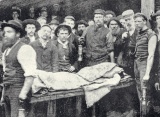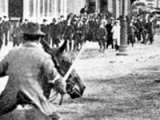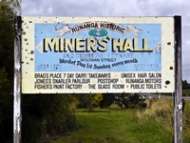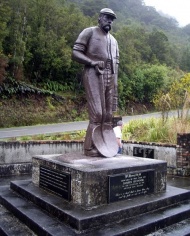Events In History
-
 26 March 1896Brunner mine disaster kills 65
26 March 1896Brunner mine disaster kills 65At 9.30 a.m., an explosion tore through the Brunner mine in Westland’s Grey Valley. Two men sent underground to investigate were later found unconscious after inhaling black damp, a suffocating mixture of nitrogen and carbon dioxide. Read more...
Articles
The 1913 Great Strike

The Great Strike of 1913 was in fact a series of strikes between mid-October 1913 and mid-January 1914. It was one of New Zealand’s most violent and disruptive industrial confrontations.
- Page 6 - The 1913 strike in the South IslandAlthough the 1913 strike had its biggest impact on Auckland and Wellington, the South Island's cities and mining towns were also
Thomas Brunner discovered a coal seam on the north side of the Brunner gorge in 1847, and mining started there in 1864. As coal mining expanded, the mining settlement spread across the hillside opposite the mine, with other communities at Wallsend, Taylorville and Dobson, a few kilometres downstream where there was more space. The mine steadily produced coal for over 40 years. The Brunner mine explosion in 1896 was New Zealand’s worst mining disaster, causing the death of 65 men and boys. The impact on the population was enormous: 186 children were left fatherless, 37 women were widowed, and 14 elderly parents were deprived of their sole financial support. The main Brunner mine was closed in 1906, but other mines started nearby. After the Dobson mine closed in 1968 there was no further mining in the area. The site of Brunnerton is almost abandoned, although the coke ovens and other features are preserved as a historic site. Most of those who live in Dobson and Taylorville now work in Greymouth.


